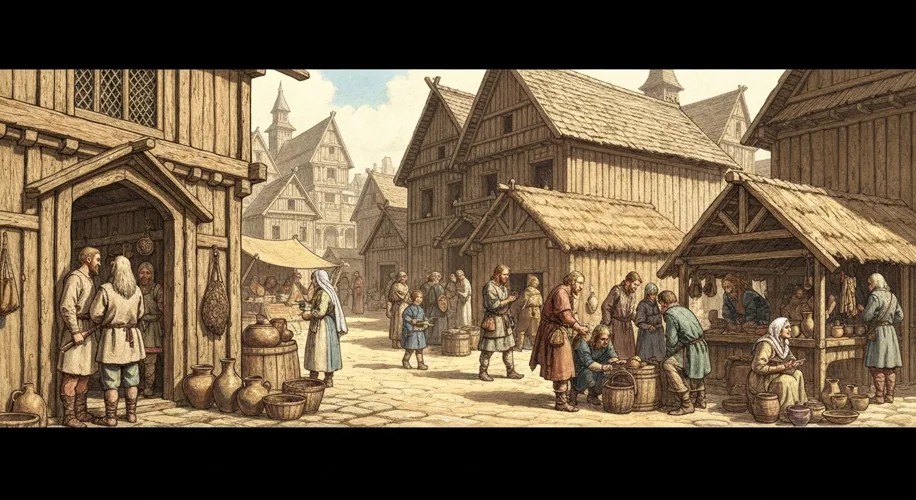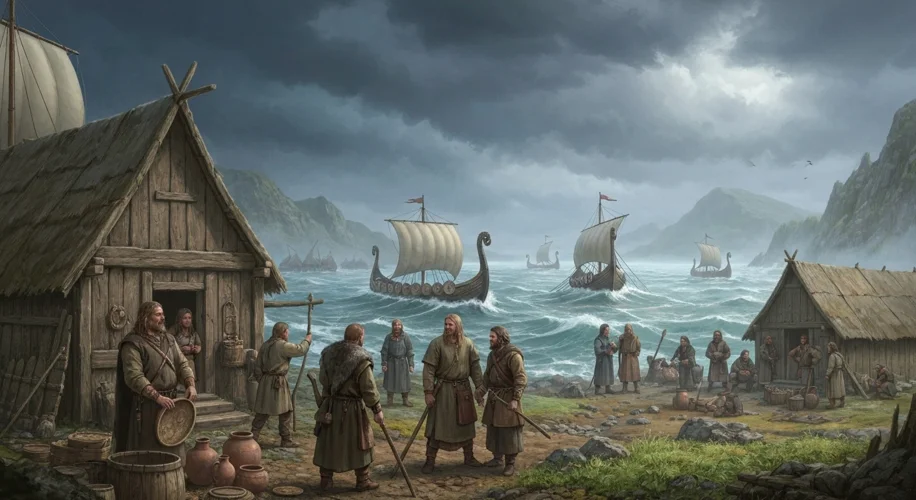The year is 793 AD. The salt spray stings your face, the wind whips through your hair, and the rhythmic creak of the longship’s timbers is the only sound that matters. Ahead, the shores of Lindisfarne monastery loom, a beacon of wealth and a stark contrast to the rugged beauty of your homeland. You are a Norseman, a warrior, a trader, an explorer – a Viking. And your world is about to change, ushering in an era that will echo through centuries.
For centuries, the Scandinavian peoples – the Danes, Norwegians, and Swedes – lived in relative isolation, their lives dictated by the harsh northern climate and the traditions of their gods: Odin, Thor, and Freyja. Their society was deeply rooted in kinship, honor, and the pursuit of glory. But something stirred within them, a restless spirit fueled by a growing population, limited resources, and perhaps, the allure of what lay beyond the stormy seas. Their advanced shipbuilding techniques, honed by generations of navigating treacherous waters, gave them the means to venture forth.

The Viking Age, which unofficially dawned with the infamous raid on the island monastery of Lindisfarne in England, was not a singular event but a slow, powerful tide of expansion. The initial raids were brutal and swift. Monasteries, often situated on coastlines and filled with precious metals and easily subdued monks, became prime targets. The sheer terror the Vikings instilled was legendary; their appearance was sudden, their ferocity unmatched. Accounts from the time speak of a people who descended like wolves upon sheep, leaving destruction and fear in their wake.
But to label the Vikings solely as bloodthirsty raiders is to paint an incomplete picture. These same seafarers were also skilled traders, venturing as far east as the Byzantine Empire and into the Caspian Sea. They established vast trade networks, exchanging goods like furs, amber, and slaves for silver, silk, and spices. Their entrepreneurial spirit led them to explore, discover, and settle new lands. Iceland, Greenland, and even North America (Vinland) bear the marks of their voyages. Figures like Erik the Red, who settled Greenland, and his son, Leif Erikson, who is credited with reaching North America centuries before Columbus, exemplify this spirit of exploration.

The impact of the Viking Age was profound and multifaceted. In Britain, their settlements, particularly the Danelaw, left an indelible mark on language, law, and culture. Many English words, from ‘sky’ and ‘skin’ to ‘they’ and ‘them’, have Old Norse origins. Their influence on the political landscape was also significant, contributing to the formation of kingdoms and the eventual unification of England. In Ireland, Viking raids and settlements profoundly altered the course of Irish history, leading to the growth of towns like Dublin.
Further south, the Varangians, a name given to the Viking traders and mercenaries who traveled through Eastern Europe, played a crucial role in the development of Kievan Rus’, the precursor to modern Russia and Ukraine. They served as elite bodyguards for the Byzantine emperors, known as the Varangian Guard, their loyalty and martial prowess highly valued.

By the mid-11th century, the Viking Age began to wane. The Christianization of Scandinavia, the rise of stronger, more centralized kingdoms within their homelands, and the assimilation of Viking settlers into the cultures they had raided or settled marked the end of this dynamic era. The last great Viking invasion was the Norman Conquest of England in 1066, led by William the Conqueror, himself a descendant of Viking settlers in Normandy.
The legacy of the Vikings is complex. They were warriors who instilled fear, but also explorers who expanded the known world, traders who fostered connections, and settlers who built new societies. Their sagas, filled with tales of adventure, bravery, and the supernatural, continue to captivate us, offering a glimpse into a time when ordinary people, armed with courage and sturdy ships, sailed into the unknown and reshaped the course of history.

